News Articles
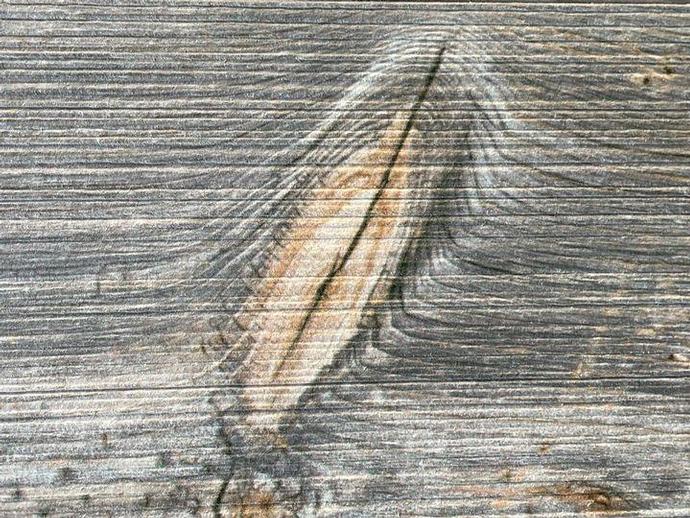
There's another update coming to VMNH
January 31, 2022
There's another update coming to VMNH...stay tuned!
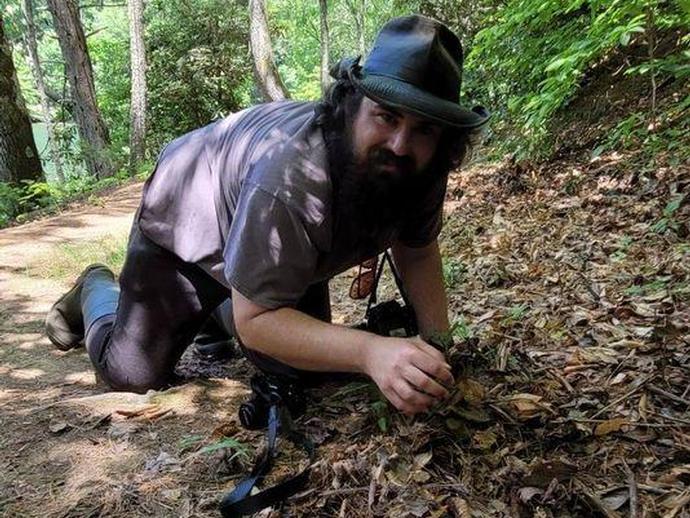
Hello nature fans!
January 31, 2022
Hello nature fans! Ben Williams here, pictured here at Philpott Lake last summer shortly after I dove into some leaf litter in a failed attempt to catch a little brown skink (Scincilla lateralis). I just wanted to let you know that beginning today, #BenInNature is going to go on a brief winter hiatus. Have no fear, however, because I'll be back in the spring to continue highlighting the wonderful critters that call Virginia home! In the meantime, I'm going to be working on an exciting new project that I think you're really going to enjoy. Take care, and I'll see you again soon! Your pal, Ben
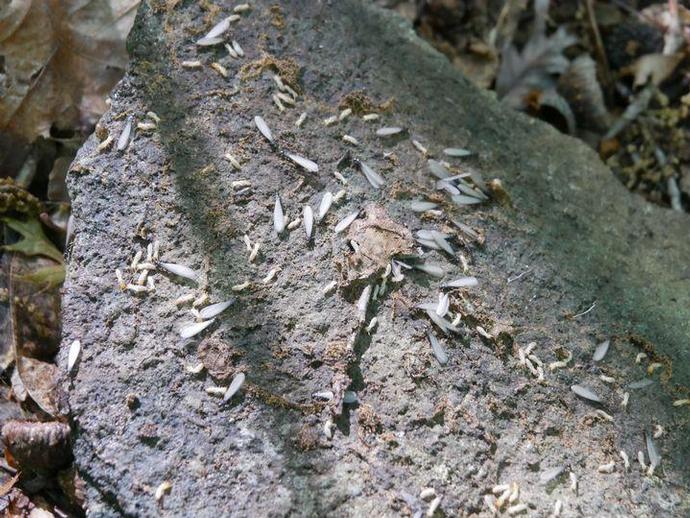
We're reaching into the archives for today's #BenInNature update presented by our friends at ...
January 30, 2022
We're reaching into the archives for today's #BenInNature update presented by our friends at Carter Bank & Trust! The following post was originally published on November 5, 2020. Yesterday we looked at the eastern subterranean termite Reticulitermes flavipes, and today we're looking at them again -- although if you go back and look at yesterday's picture, you'll notice that these guys look pretty different! These termites are what are known as "alates," which means the winged reproductive caste of a social insect colony. Ants also produce alates, and if you're a wingless social insect that lives in a colony, alates provide a wonderful solution to a pretty serious problem: how do you create a new colony some distance from ...
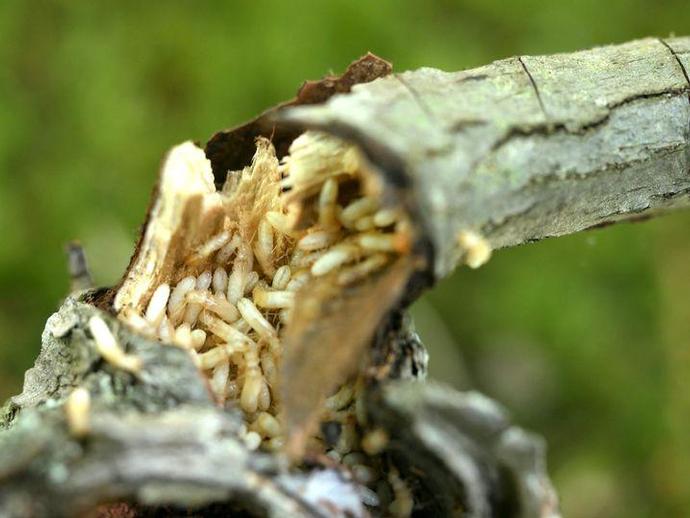
We're reaching into the archives for today's #BenInNature update presented by our friends at ...
January 29, 2022
We're reaching into the archives for today's #BenInNature update presented by our friends at Carter Bank & Trust! The following post was originally published on November 4, 2020. The eastern subterranean termite (Reticulitermes flavipes) is our most common North American termite. If you're a homeowner, the word "termite" probably fills you with dread, but as much as they can be pests, we would be in pretty dire straits if we didn't have termites around. Each year, termite control in the U.S. costs about $2.2 billion; however, termites play a critical role in digesting cellulose from dead organic matter in our forests, and if we didn't have them around to recycle nutrients, our forests would be in pretty rough shape. If you ...
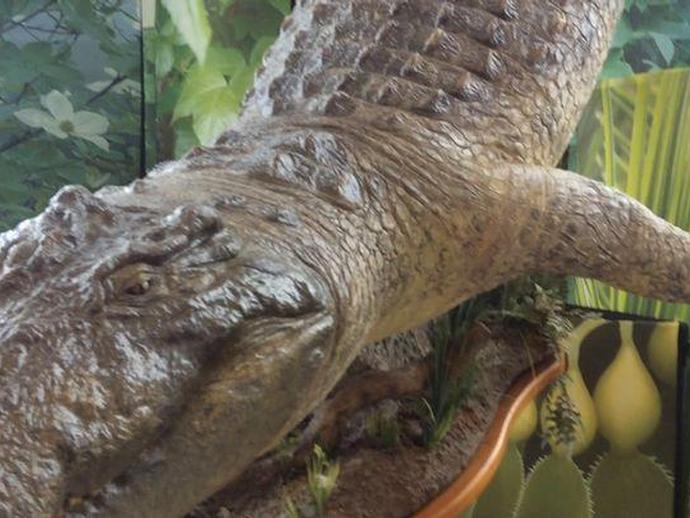
Nile crocodiles are just too cool to only highlight once!
January 28, 2022
Nile crocodiles are just too cool to only highlight once! We're revisiting the awesome Nile crocodile display that greets visitors when they first enter the museum in this week's episode of "Museum Minute"! This episode was originally published March 12, 2021. ABOUT MUSEUM MINUTE The Virginia Museum of Natural History has a spectacular assortment of displays within its exhibit galleries! Some displays are unforgettable, while others don't always get the attention they deserve. Through the original series "Museum Minute", museum educators highlight various displays throughout the exhibit galleries, while providing intriguing facts you may not have known. "Museum Minute" is made possible thanks to VMNH Corporate Partners ...
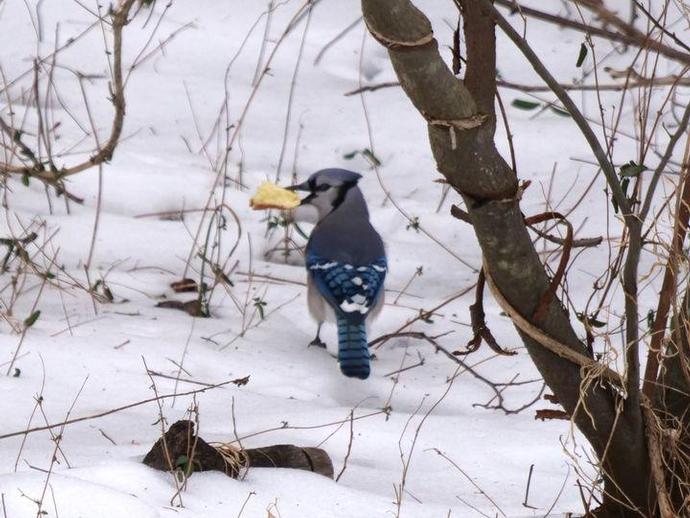
Ben here with the Friday edition of #BenInNature presented by our friends at Carter Bank & Trust!
January 28, 2022
Ben here with the Friday edition of #BenInNature presented by our friends at Carter Bank & Trust! The blue jay (Cyanocitta cristata), seen here absconding with a scrap from my compost heap, gets a bad rap. Too many backyard birders hate blue jays, especially when they come swooping into the feeder and scatter all the other birds. Even John James Audubon wrote of the blue jay, "Who could imagine that selfishness, duplicity, and malice should form the moral accompaniments of so much physical perfection!" That's a pretty harsh assessment of a bird. Sure, blue jays do sometimes scare other birds away from the feeder, and on rare occasions they've been known to plunder eggs and even nestlings from the nests of other birds. ...
� LAST CHANCE TO VOTE FOR PETRA!
January 27, 2022
� LAST CHANCE TO VOTE FOR PETRA!! Will you help vote for "Petra" as the top endangered Virginia artifact? Petra, an ancient cat that was extracted from deep within a cave in western Virginia late last year, recently received recognition as one of Virginia's Top 10 Endangered Artifacts for 2021 by the Virginia Association of Museums (VAM), and you can now vote for Petra as YOUR favorite endangered artifact! The artifact receiving the most votes will be awarded $2,000 in conservation funding! HOW TO VOTE FOR PETRA Voting only takes several seconds and you can vote for Petra once every 24 hours now through January 27! Simply visit https://vamuseums-org.wishpond. ...
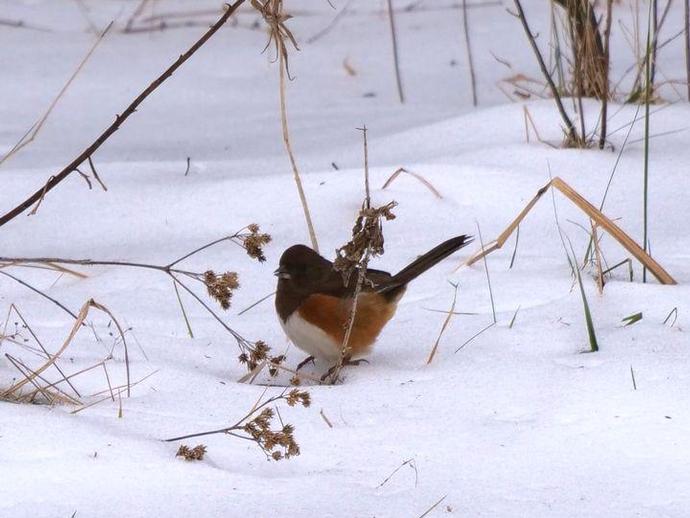
It's time for the Thursday edition of #BenInNature presented by our friends at Carter Bank & ...
January 27, 2022
It's time for the Thursday edition of #BenInNature presented by our friends at Carter Bank & Trust! The eastern towhee (Pipilo erythrophthalmus, and good luck pronouncing that!) is a striking member of the sparrow family, and also a great example of how our understanding of species is constantly changing! When I was a little kid, I learned a lot about birds from my grandma, and this one has always been one of her favorites. She referred to this bird as a "rufous-sided towhee," so that was what I called it myself. I was surprised when I looked it up a few years ago and saw that it's now called the "eastern towhee." As it turns out, up until the last couple of decades, the eastern towhee (which only occurs in the eastern ...
�IT'S NOT TOO LATE TO VOTE!
January 26, 2022
�IT'S NOT TOO LATE TO VOTE! Will you help vote for "Petra" as the top endangered Virginia artifact? Petra, an ancient cat that was extracted from deep within a cave in western Virginia late last year, recently received recognition as one of Virginia's Top 10 Endangered Artifacts for 2021 by the Virginia Association of Museums (VAM), and you can now vote for Petra as YOUR favorite endangered artifact! The artifact receiving the most votes will be awarded $2,000 in conservation funding! HOW TO VOTE FOR PETRA Voting only takes several seconds and you can vote for Petra once every 24 hours now through January 27! Simply visit https://vamuseums-org.wishpond. ...
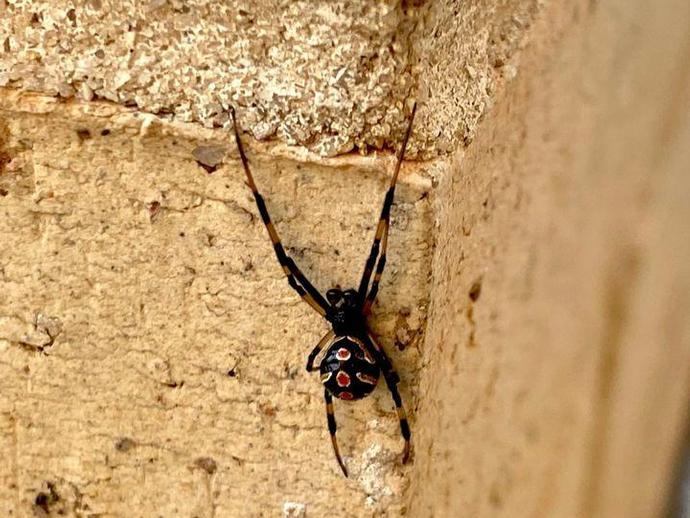
Ben here with the Wednesday edition of #BenInNature presented by our friends at Carter Bank & ...
January 26, 2022
Ben here with the Wednesday edition of #BenInNature presented by our friends at Carter Bank & Trust! This little guy is something you don't see every day, and it's especially something you don't expect to see when there's a bunch of snow on the ground. This is a male Latrodectus mactans, better known as the southern black widow spider! I spotted this little fellow right outside of the museum last Thursday, just a few days after the snow had fallen. Before you get concerned, rest assured that male black widows are pretty much harmless, most likely because they're smaller than females and their mouthparts are either too small or too weak to inject venom into a human. For the record, while a bite from a female southern ...

The museum will be CLOSED to visitors today, Wednesday, Jan
January 25, 2022
The museum will be CLOSED to visitors today, Wednesday, Jan. 26 due to a power failure. We apologize for the inconvenience.
One of the coolest recent discoveries in Virginia, if we do say so ourselves!
January 25, 2022
One of the coolest recent discoveries in Virginia, if we do say so ourselves!
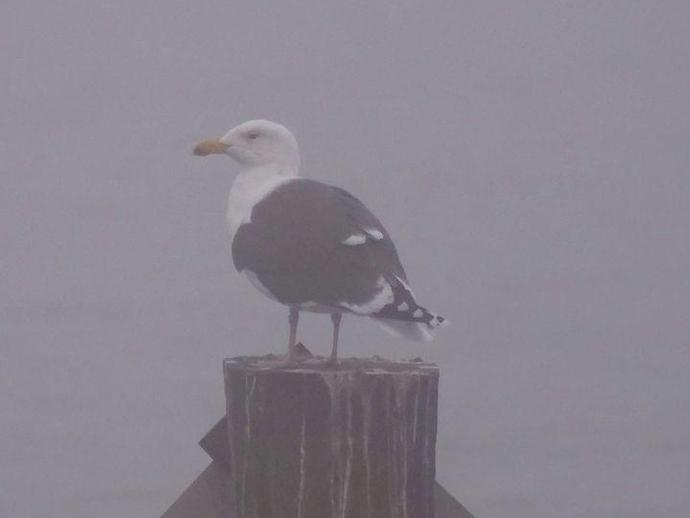
Ben here with the Tuesday edition of #BenInNature presented by our friends at Carter Bank & Trust!
January 25, 2022
Ben here with the Tuesday edition of #BenInNature presented by our friends at Carter Bank & Trust! As I mentioned yesterday, I was in Norfolk a couple of weeks ago and photographed some shorebirds early one foggy morning. Today we're looking at the second one I spotted, the great black-backed gull (Larus marinus), the largest gull in the world! The Cornell Lab of Ornithology describes this bird as "the king of the Atlantic waterfront." Personally, I thought that title belonged to Bally's Atlantic City Casino, but I suppose this majestic seagull also deserves the title. A full-size black-backed gull can have a wingspan of nearly six feet and weigh as much as five pounds! The great black-backed gull has a wide range and ...
HEY, MUSEUM FANS!
January 24, 2022
HEY, MUSEUM FANS! We're asking our awesome Facebook following to help vote for "Petra" as the top endangered Virginia artifact! Petra, an ancient cat that was extracted from deep within a cave in western Virginia late last year, recently received recognition as one of Virginia's Top 10 Endangered Artifacts for 2021 by the Virginia Association of Museums (VAM), and you can now vote for Petra as YOUR favorite endangered artifact! The artifact receiving the most votes will be awarded $2,000 in conservation funding! HOW TO VOTE FOR PETRA Voting only takes several seconds and you can vote for Petra once every 24 hours now through January 27! Simply visit https://vamuseums-org.wishpond. ...
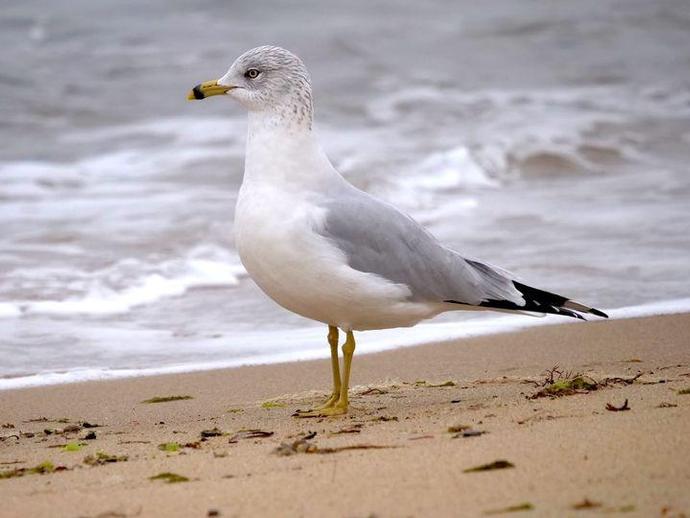
It's time for today's edition of #BenInNature presented by our friends at Carter Bank & Trust!
January 24, 2022
It's time for today's edition of #BenInNature presented by our friends at Carter Bank & Trust! A couple of weeks ago, I took a trip to Norfolk and woke up early one foggy morning to take some photos of shorebirds on the Chesapeake Bay. I spotted two different species that we'll look at today and tomorrow, starting with the ring-billed gull (Larus delawarensis)! Ring-billed gulls, which are named for the dark ring around their beaks, were once hunted extensively for their plumage. Today, however, their numbers have rebounded significantly and they're likely our most common North American seagull with a population estimated at 2.5 million birds! Ring-billed gulls are known for stealing food from other birds, and they're ...
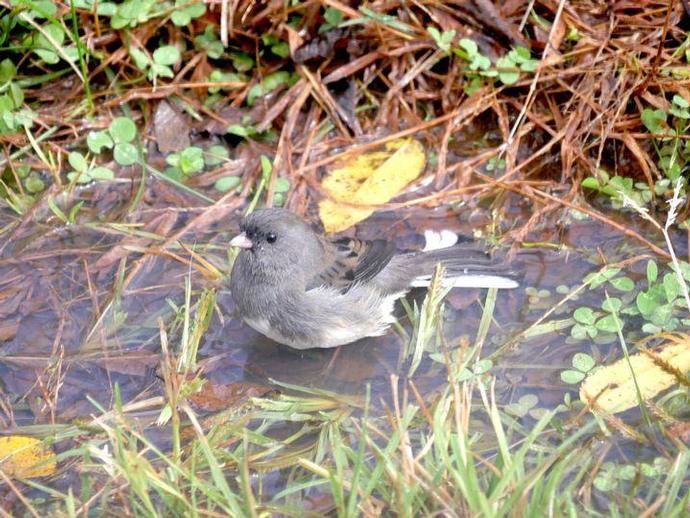
We're reaching into the archives for today's #BenInNature update presented by our friends at ...
January 23, 2022
We're reaching into the archives for today's #BenInNature update presented by our friends at Carter Bank & Trust! The following post was originally published on November 3, 2020. Here we see a dark-eyed junco (Junco hyemalis) enjoying a bath following the torrential downpour we received this past Friday morning. Before we talk about this particular bird, you might be wondering why birds like to bathe in puddles or in the bird bath in your backyard. The answer, surprisingly, is that we aren't exactly sure! However, the prevailing theory is that birds need to bathe their feathers to keep them cleaned and well-maintained. Birds only replace their feathers once or twice a year, and as their feathers get beaten up by regular ...
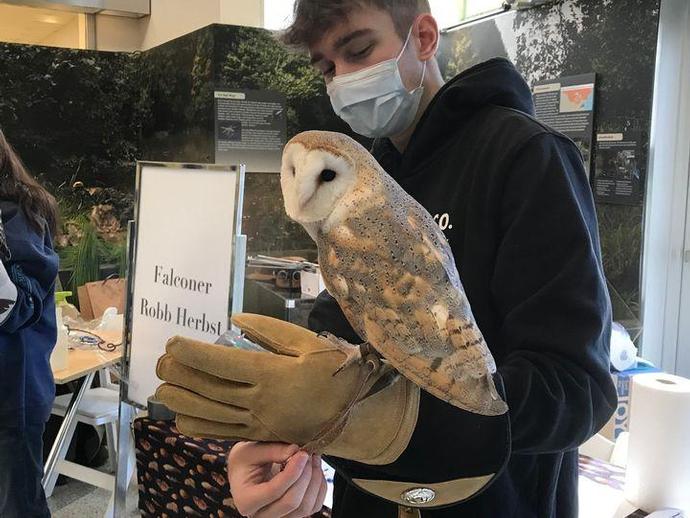
��� Thank you to everyone who came out to participate in today's opening ...
January 22, 2022
��� Thank you to everyone who came out to participate in today's opening day celebration of the museum's newest special exhibit, "The Science of Flight"! Today's event offered a variety of one-day-only, flight-themed activities and displays that ranged from live birds of prey to mini-parachute drops and paper airplane contests! Special thanks to Carter Bank & Trust and The Helen S. and Charles G. Patterson, Jr. Charitable Foundation Trust for sponsoring today's event! Added special thanks to Carter Bank & Trust for going above and beyond to provide many volunteers to help facilitate opening day! If you didn't get a chance to come out to the museum today, don't fret. "The Science of Flight" exhibit ...
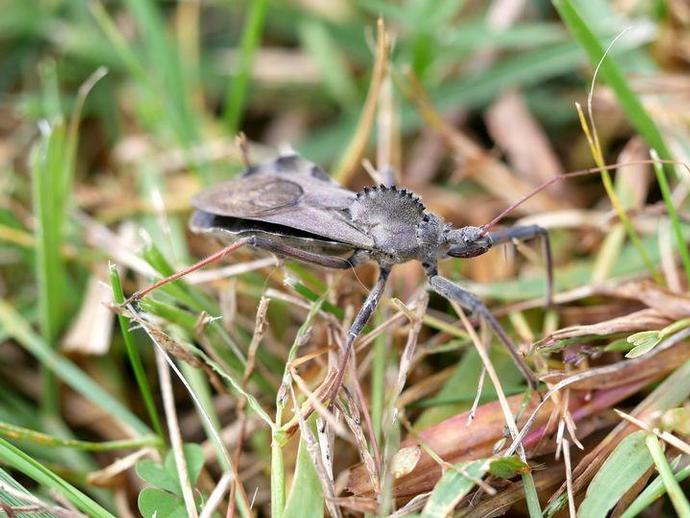
We're reaching into the archives for today's #BenInNature update presented by our friends at ...
January 22, 2022
We're reaching into the archives for today's #BenInNature update presented by our friends at Carter Bank & Trust! The following post was originally published on November 2, 2020. Over the last couple of months, I've gotten multiple identification requests from regular #BenInNature readers asking about this unusual-looking insect. Let's kick off the week by looking at the wheel bug (Arilus cristatus), an impressive little predator that should be treated with respect! Wheel bugs belong to the assassin bug family Reduviidae and they're one of the biggest true bugs (members of the order Hemiptera) in North America, growing up to an inch and a half long! The adults are easily identifiable because of the large "wheel" on their ...
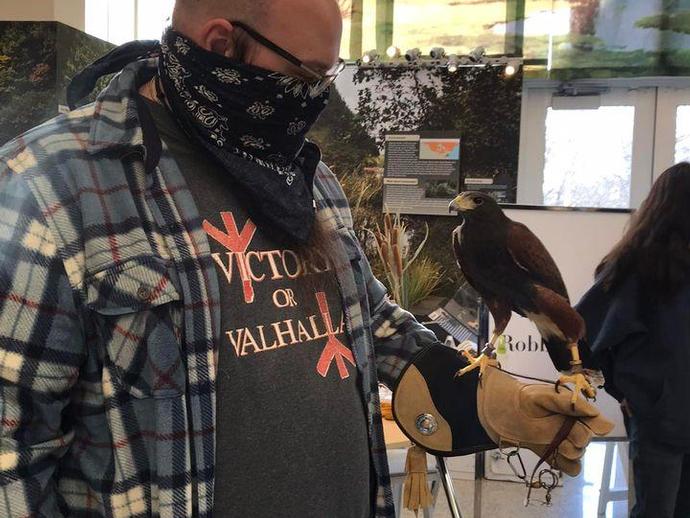
The Science of Flight exhibit opening celebration and festival has just begun at VMNH!
January 22, 2022
The Science of Flight exhibit opening celebration and festival has just begun at VMNH! We hope to see you here!
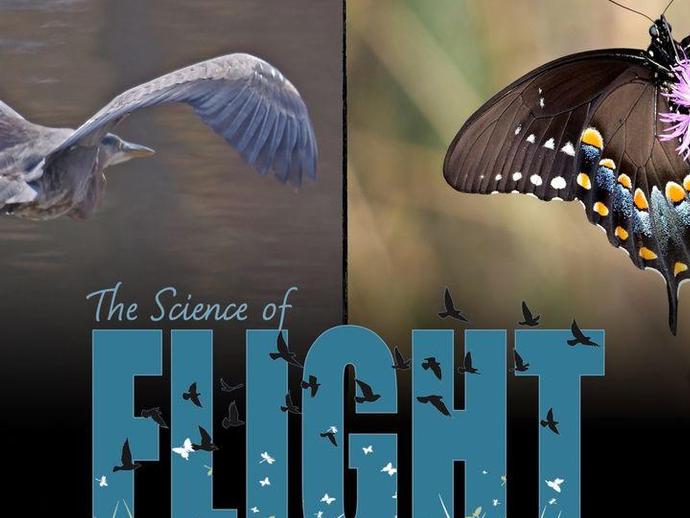
��� We can't wait to see YOU at the museum TODAY from 10 a
January 21, 2022
��� We can't wait to see YOU at the museum TODAY from 10 a.m. to 4 p.m. for "The Science of Flight" Exhibit Opening Celebration! To celebrate the public unveiling of this original, bilingual exhibit, opening day will feature a slew of one-day-only offerings including: * Live Birds of Prey (falcon and barn owls) with licensed Master Falconer Robb Herbst * Balloon Animals * Paper Airplane Contest with Museum Store gift certificates awarded to winners for longest distance and judge's favorite! * Flight-themed crafts, including "Color Your Own Butterfly Glider" and "Design & Create Your Own Mini-Parachute" * Flight-themed scientific displays presented by museum researchers * Bird-themed stories ...
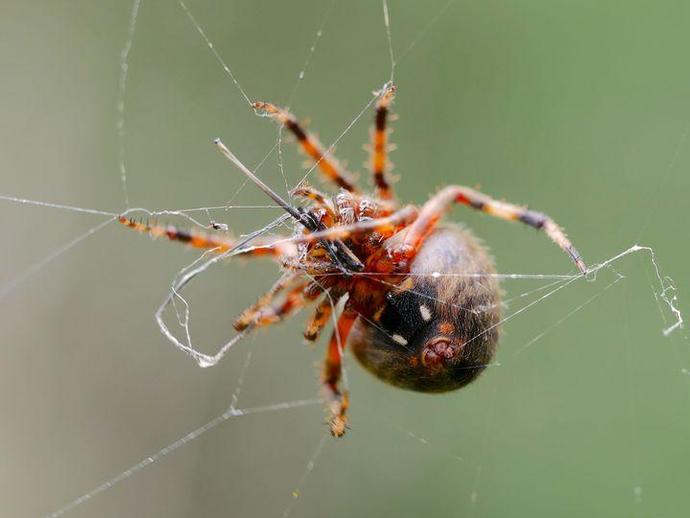
We're reaching into the archives for today's #BenInNature update presented by our friends at ...
January 21, 2022
We're reaching into the archives for today's #BenInNature update presented by our friends at Carter Bank & Trust! The following post was originally published on October 30, 2020. This is a Hentz orbweaver (Neoscona crucifera), and it looks extremely similar to the related spotted orbweaver (Neoscona domiciliorum). These sizable orbweaver spiders can be found across most of the U.S. and down into Mexico, and they're active from June through November. Now that fall has arrived, there's a good chance that you've seen either this spider or the spotted orbweaver outside your home. At dusk, these spiders build large wheel-shaped webs and wait in the middle for prey to fly by. When a prey insect smacks into the web, the spider ...

��� We can't wait to see YOU at the museum tomorrow for "The Science of ...
January 21, 2022
��� We can't wait to see YOU at the museum tomorrow for "The Science of Flight" Exhibit Opening Celebration! To celebrate the public unveiling of this original, bilingual exhibit, opening day will feature a slew of one-day-only offerings including: * Live Birds of Prey (falcon and barn owls) with licensed Master Falconer Robb Herst * Balloon Animals * Paper Airplane Contest with Museum Store gift certificates awarded to winners for longest distance and judge's favorite! * Flight-themed crafts, including "Color Your Own Butterfly Glider" and "Design & Create Your Own Mini-Parachute" * Flight-themed scientific displays presented by museum researchers * Bird-themed stories and activities ...
HEY, MUSEUM FANS!
January 20, 2022
HEY, MUSEUM FANS! We're asking our awesome Facebook following to help vote for "Petra" as the top endangered Virginia artifact! Petra, an ancient cat that was extracted from deep within a cave in western Virginia late last year, recently received recognition as one of Virginia's Top 10 Endangered Artifacts for 2021 by the Virginia Association of Museums (VAM), and you can now vote for Petra as YOUR favorite endangered artifact! The artifact receiving the most votes will be awarded $2,000 in conservation funding! HOW TO VOTE FOR PETRA Voting only takes several seconds and you can vote for Petra once every 24 hours now through January 27! Simply visit https://vamuseums-org.wishpond. ...
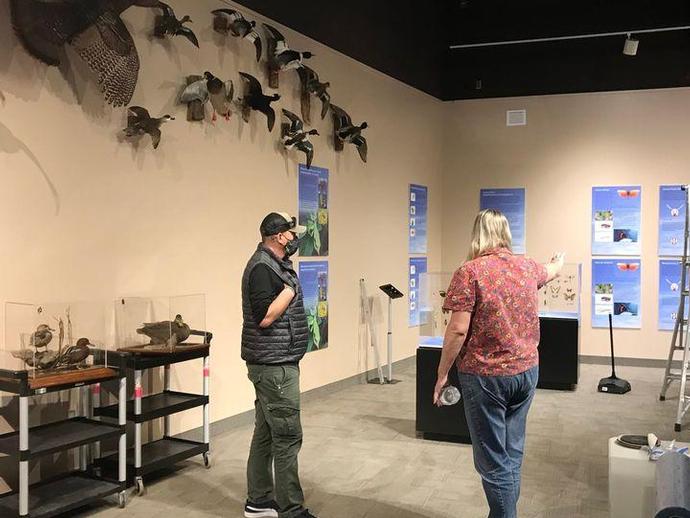
��� Staff are putting the finishing touches on "The Science of Flight" ...
January 19, 2022
��� Staff are putting the finishing touches on "The Science of Flight" exhibit, which will open to the public THIS SATURDAY from 10am to 4pm during "The Science of Flight" Exhibit Opening Celebration! The original exhibit, which will be the first VMNH special exhibit to be offered in English and Spanish, will provide an in-depth look into the many different methods animals take to the air and how studying the animal kingdom provided the basis for humans' ability to take flight. To celebrate opening day, the museum is hosting "The Science of Flight Festival", featuring additional, one-day-only, flight-themed offerings, including live birds of prey, balloon animals, crafts and more! Learn more about ...
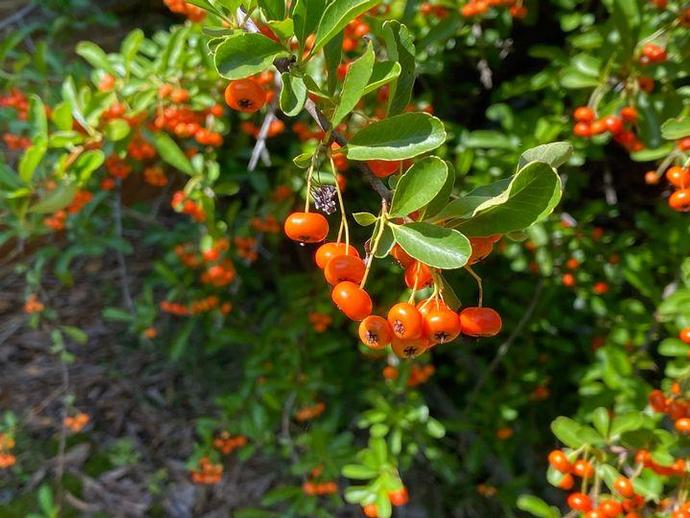
Ben here with today's edition of #BenInNature presented by our friends at Carter Bank & Trust!
January 19, 2022
Ben here with today's edition of #BenInNature presented by our friends at Carter Bank & Trust! Here's a photo I took a couple of months back of my grandma's pyracantha, a genus of thorny evergreen shrubs. Pyracanthas aren't native to Virginia -- they occur naturally between southwest Europe and southeast Asia -- but they're a fairly common ornamental here in the U.S. While I don't personally recommend planting non-native plants, it's easy to see why pyracantha is a popular ornamental. They produce dense masses of attractive orange berries that are favored by birds. However, they also produce thorns that can cause inflammation and pain if they pierce the skin! For this reason, pyracanthas are sometimes used as a natural ...
VMNH will open to the public on a regular schedule Wednesday, January 19
January 18, 2022
VMNH will open to the public on a regular schedule Wednesday, January 19. However, all Homeschool classes have been CANCELED.
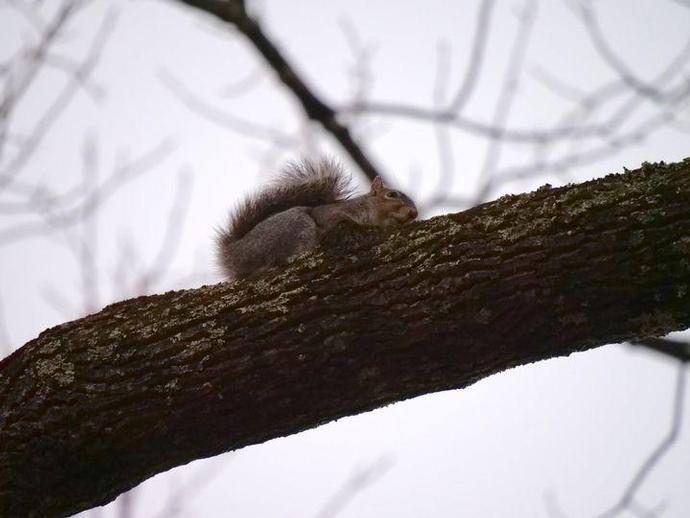
It's time for a brand new edition of #BenInNature presented by our friends at Carter Bank & Trust!
January 18, 2022
It's time for a brand new edition of #BenInNature presented by our friends at Carter Bank & Trust! Eastern gray squirrels (Sciurus carolinensis) are one of those critters that are so ubiquitous that we don't think much about them. It's not exactly hard to find a gray squirrel, as anyone who owns a bird feeder can attest. However, squirrels are truly remarkable animals, and they play an important role in their ecosystem. Most people know that squirrels bury and cache nuts to sustain themselves through the winter months. However, you might not know that squirrels lose about a quarter of those nuts to burglars! Birds and other squirrels will steal buried nuts, but squirrels have a trick up their furry sleeves; they'll ...

**The museum's Homeschool Science & Engineering Academy classes have been canceled for tomorrow, ...
January 18, 2022
**The museum's Homeschool Science & Engineering Academy classes have been canceled for tomorrow, Wednesday, Jan. 19.**

� Head over to VirginiaLiving
January 18, 2022
� Head over to VirginiaLiving.com/Vote2022 right now to vote for VMNH in Virginia Living Magazine's Best of Virginia 2022 Readers' Survey! You can now vote for YOUR Virginia Museum of Natural History as the best museum in Southwest Virginia AND as having the best summer camp offerings in the region! The survey ends January 31...vote today!! #VirginiaLiving #BOV2022 #BestOfVirginiaVote
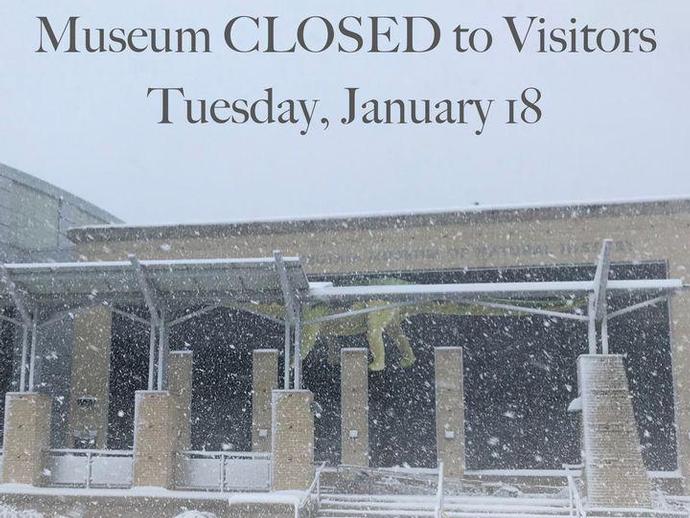
❗️❄️ Due to inclement weather ...
January 17, 2022
❗️❄️ Due to inclement weather, the Virginia Museum of Natural History will be closed to visitors on Tuesday, January 18.
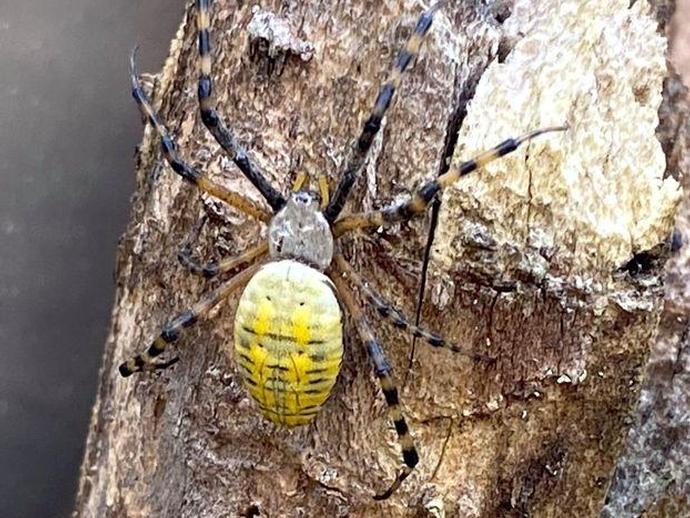
Ben's taking a well-deserved day off ...
January 17, 2022
Ben's taking a well-deserved day off, so we're reaching into the archives for today's #BenInNature update presented by our friends at Carter Bank & Trust! The following post was originally published on October 29, 2020. Today we're looking at the banded garden spider (Argiope trifasciata), a large spider native to North and South America. This spider is not to be confused with the yellow garden spider (Argiope aurantia), which is the large yellow and black spider that you're likely to find building a web near your home. While they belong to the same genus, the banded garden spider tends to avoid building its webs out in the open in the same way that yellow garden spiders do. It's also believed that the banded garden ...
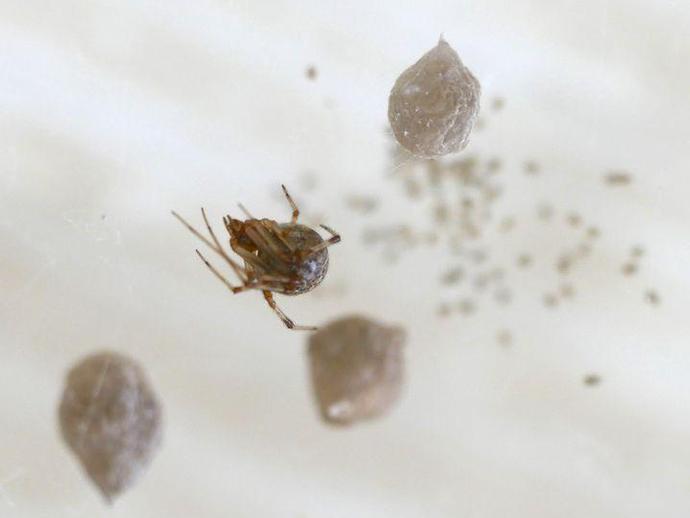
We're reaching into the archives for today's #BenInNature update presented by our friends at ...
January 16, 2022
We're reaching into the archives for today's #BenInNature update presented by our friends at Carter Bank & Trust! The following post was originally published on October 28, 2020. Today, we're continuing our Pre-Halloween Spooky Spider Countdown with Parasteatoda tepidariorum, better known as the common house spider! There's a good chance you've seen these little spiders before, and you probably have a few in or around your home (not to freak you out or anything). The common house spider is considered "synanthropic," which means it's a wild species that lives near and benefits from the artificial habitats that humans create. As an example, this particular house spider is one of at least three living on my front porch. ...
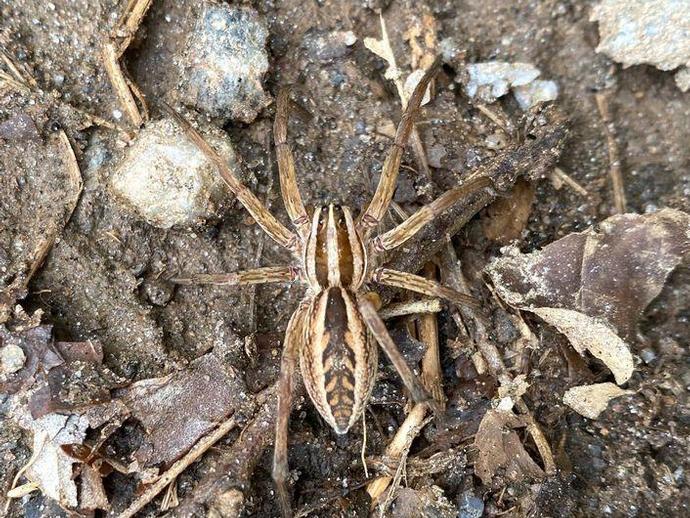
We're reaching into the archives for today's #BenInNature update presented by our friends at ...
January 15, 2022
We're reaching into the archives for today's #BenInNature update presented by our friends at Carter Bank & Trust! The following post was originally published on October 27, 2020. Halloween is my favorite holiday and it's almost upon us! What better way to celebrate than with SPOOKY SCARY SPIDERS?!? My apologies to the arachnophobes out there, but for the rest of this week, we'll be looking at some cool spiders you can find in southwest Virginia! First up is Rabidosa rabida, the rabid wolf spider. Despite the name, these spiders don't carry rabies; the name likely comes from their aggressive behavior toward insects and other spiders. The "wolf" portion of the name comes from the way that wolf spiders hunt; like wolves, ...
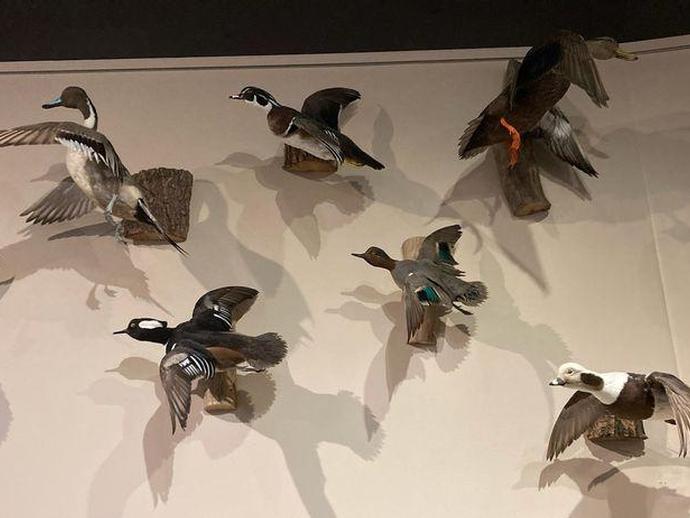
Museum staff were back in action today installing "The Science of Flight" exhibit ...
January 15, 2022
Museum staff were back in action today installing "The Science of Flight" exhibit, which is scheduled to debut on Saturday, January 22 during "The Science of Flight" Exhibit Opening Celebration! Today was � day, with numerous duck specimens installed on the exhibit walls! "The Science of Flight" is an original, multilingual, special exhibit providing visitors an in-depth look into the many different methods animals take to the air and how studying the animal kingdom provided the basis for humans' ability to take flight. Featuring a multitude of scientific specimens from the museum's collections of birds, mammals, insects and fossils, the exhibit explores a variety of topics ranging from the aerodynamics of flight ...
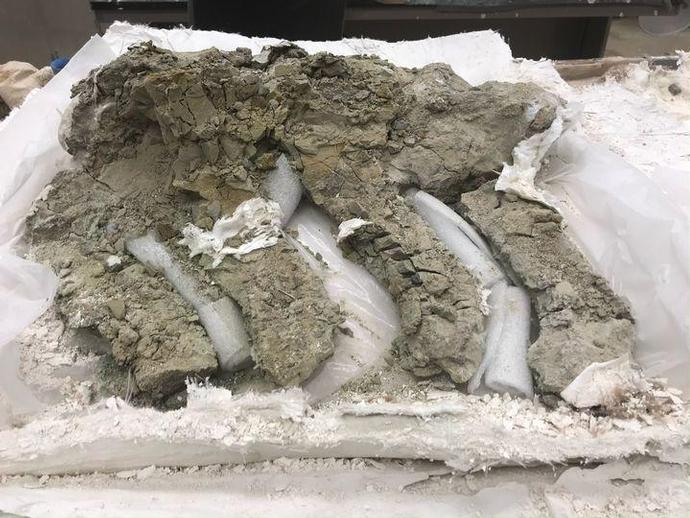
Talk about dedication!
January 14, 2022
Talk about dedication! Volunteer extraordinaire Alicia Lantz has been expertly preparing these caudal (tail) vertebrae of a sauropod dinosaur over the last year and, today, she finished them up! Of course, she would have finished sooner, except paleo staff kept pulling her off this project to help out with the many other ongoing projects in the lab. Now, in total, the paleo crew has 7 caudal vertebrae prepped out from this individual dinosaur! #WhatWillYouDiscover?
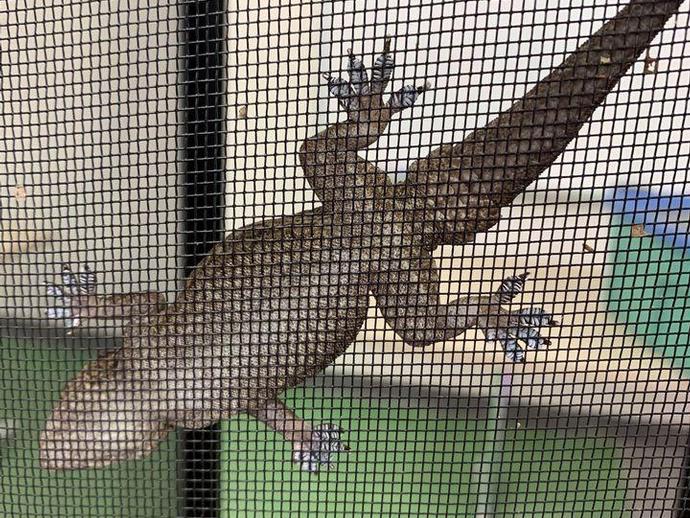
We're just hangin' out on a Friday afternoon!
January 14, 2022
We're just hangin' out on a Friday afternoon! It's rare to actually find Mereet in its museum habitat, so we took a couple of pics while we had the chance. Mereet is an Asian house gecko (Hemidactylus frenatus) that, as the name suggests, is native to Souheast Asia. This particular Asian house gecko is a rescue that was accidentally brought to the United States in a shipping container. Like most geckos, she is nocturnal, hiding during the day and foraging for insects at night. Fun Fact: This species can lose its tail when attacked, but will grow another!
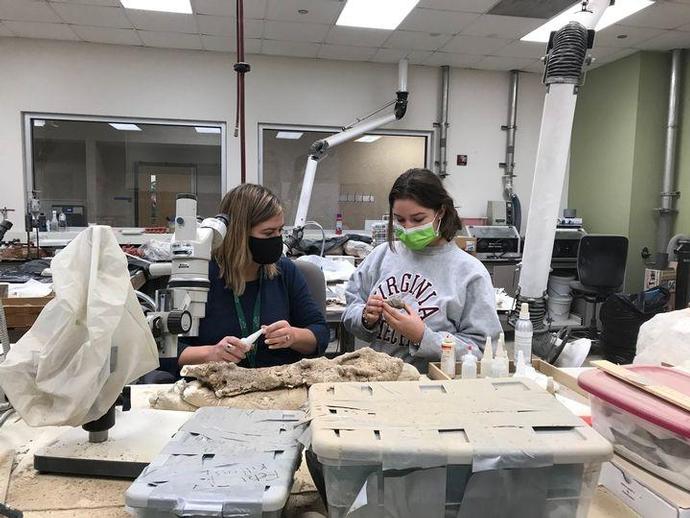
The museum is happy to welcome Sofia Kryder (right) ...
January 14, 2022
The museum is happy to welcome Sofia Kryder (right), a student from James River High School in Botetourt County, to the VMNH paleontology team for the semester! Sofia will be spending a couple of days per week at the museum working inside the labs and collection areas to gain real world experience to accompany her keen interest in paleontology! In this picture, Sofia stops by the paleontology lab to pick the brain of VMNH Paleontology Technician Lucy Treado regarding a specimen she found inside the paleo collections. The specimen is from a pit at the Carmel Church Quarry (Caroline County, VA), where Eobalaenoptera (an extinct genus of baleen whale) was discovered. Welcome aboard, Sofia! #FutureScientists
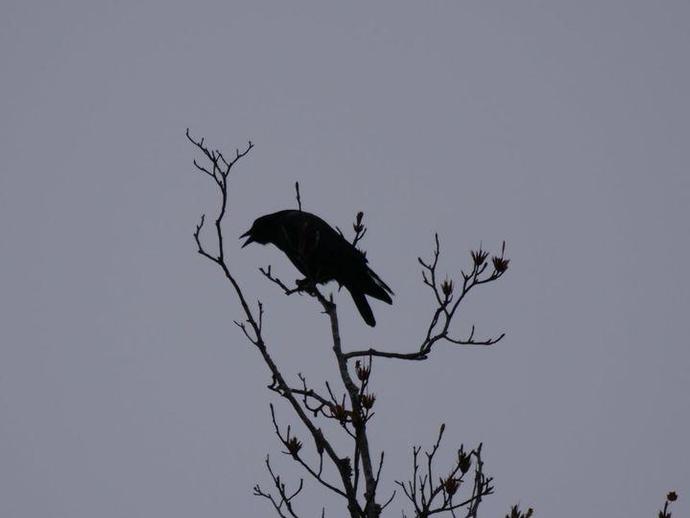
Ben here with Friday's edition of #BenInNature presented by our friends at Carter Bank & Trust!
January 14, 2022
Ben here with Friday's edition of #BenInNature presented by our friends at Carter Bank & Trust! The American crow (Corvus brachyrhynchos), seen here in mid-caw, is one of my absolute favorite birds! Sure, they're not much to look at, and they don't have a pretty song, and they're an agricultural pest, but crows have something most birds don't: smarts. Just how smart are crows? While it's hard to measure an animal's intelligence in the same way we measure a human's, some scientists believe crows are about as smart as a seven-year-old child. For one thing, they can use tools. Crows have been observed using sticks to spear food items, and they will even bend wire to make hooks for obtaining food. There's a famous Aesop ...
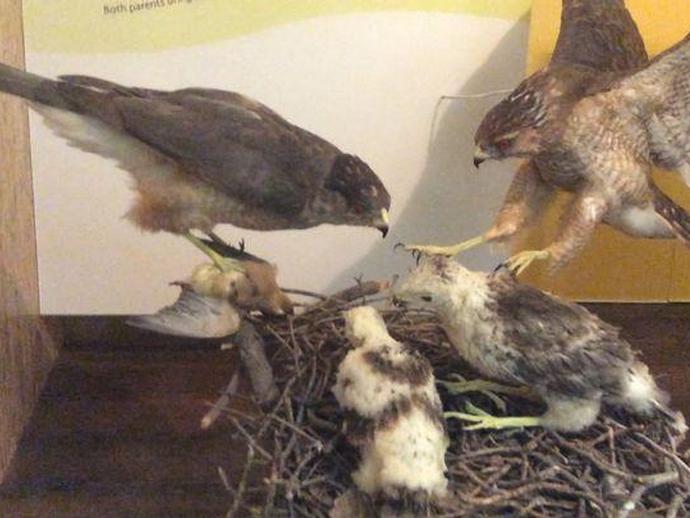
Although they're an unwelcome sight for their favorite prey ...
January 14, 2022
Although they're an unwelcome sight for their favorite prey, songbirds, Cooper's hawks are fascinating raptors and VMNH Education Manager Christy Deatherage is inside the Lee and George W. Lester, II How Nature Works gallery to highlight the Cooper's hawks display in this week's episode of "Museum Minute"! ABOUT MUSEUM MINUTE The Virginia Museum of Natural History has a spectacular assortment of displays within its exhibit galleries! Some displays are unforgettable, while others don't always get the attention they deserve. Through the original series "Museum Minute", museum educators highlight various displays throughout the exhibit galleries, while providing intriguing facts you may not have known. "Museum Minute" is ...
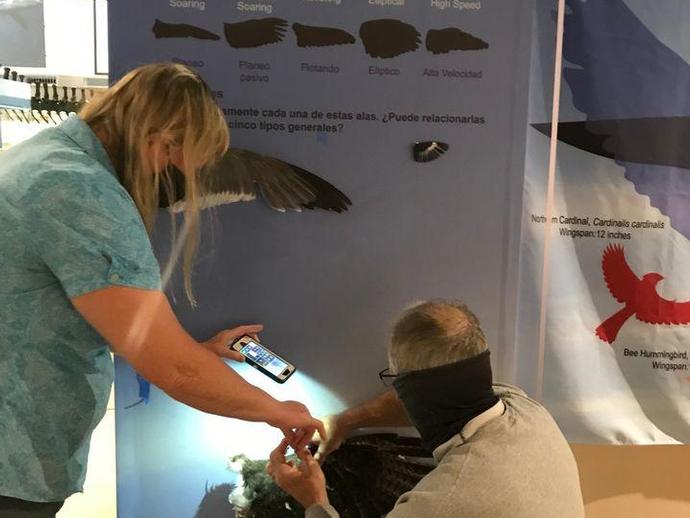
VMNH Curator of Mammalogy Dr
January 13, 2022
VMNH Curator of Mammalogy Dr. Nancy Moncrief and Museum Technician Donnie Jones are busy installing the next special exhibit, "The Science of Flight", which is set to debut on Saturday, January 22 during the "The Science of Flight" Exhibit Opening Celebration! In these pics, Dr. Moncrief and Mr. Jones are placing a variety of bird wing specimens for display. The original exhibit, which will be the first VMNH special exhibit to be offered in English and Spanish, will provide an in-depth look into the many different methods animals take to the air and how studying the animal kingdom provided the basis for humans' ability to take flight. To celebrate opening day, the museum is hosting The Science of Flight Festival, ...
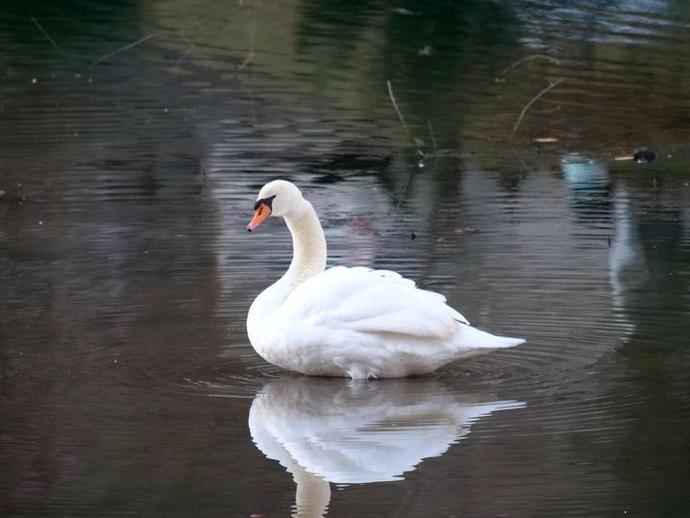
Ben here with the Thursday edition of #BenInNature presented by our friends at Carter Bank & ...
January 13, 2022
Ben here with the Thursday edition of #BenInNature presented by our friends at Carter Bank & Trust! The mute swan (Cygnus olor) isn't native to the U.S., but you'd be forgiven for thinking it was! These beautiful swans are actually native to the temperate parts of Europe, but after being introduced in the U.S. in the 1870s, America is now home to the largest population of mute swans outside of their native range! Unfortunately, mute swans have become an invasive species in the U.S. and they have a severe negative impact on underwater vegetation. Unlike most invasive species, the public tends to fight efforts at controlling mute swan populations. Of course, if northern snakeheads and spotted lanternflies were as graceful ...
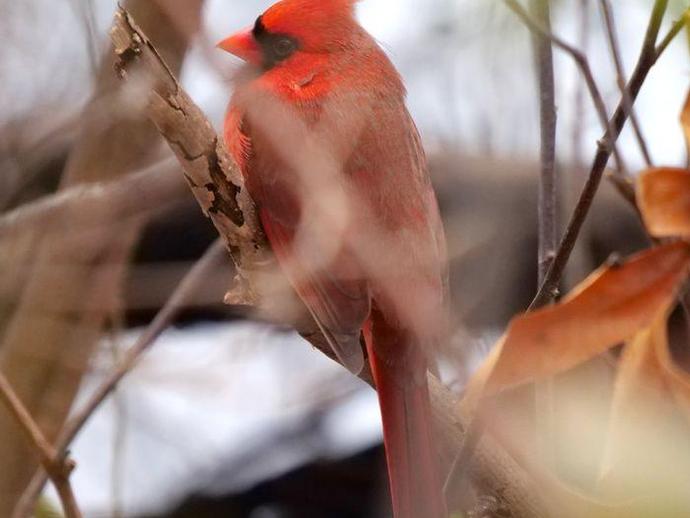
It's time for today's edition of #BenInNature presented by our friends at Carter Bank & Trust!
January 12, 2022
It's time for today's edition of #BenInNature presented by our friends at Carter Bank & Trust! I recently got an email from a regular #BenInNature reader asking where all the northern cardinals (Cardinalis cardinalis) had gone. While I'm not sure where her specific cardinals ran off to, they're definitely out there somewhere! In fact, cardinals can be found year-round in the eastern 2/3s of the U.S., and their range extends through much of Mexico. Male northern cardinals are one of the easiest Virginia birds to identify; nothing else in the Commonwealth looks anything like them. The females are a light yellowish-brown color but largely resemble the males otherwise. Up to 90 percent of a cardinal's diet consists of ...

"Life Underwater: Aquatic Insects and their Feeding Habits in the South River" presented by Dr
January 11, 2022
"Life Underwater: Aquatic Insects and their Feeding Habits in the South River" presented by Dr. Joe Keiper Dr. Joe Keiper is Executive Director of the Virginia Museum of Natural History, and an expert entomologist who has frequently investigated questions pertaining to rivers, streams, and wetlands. Natural history observations on the feeding habits of aquatic insects help us better understand food webs. During this presentation, Dr. Keiper will discuss the diversity of insects underwater, and how they shape ecological communities there.
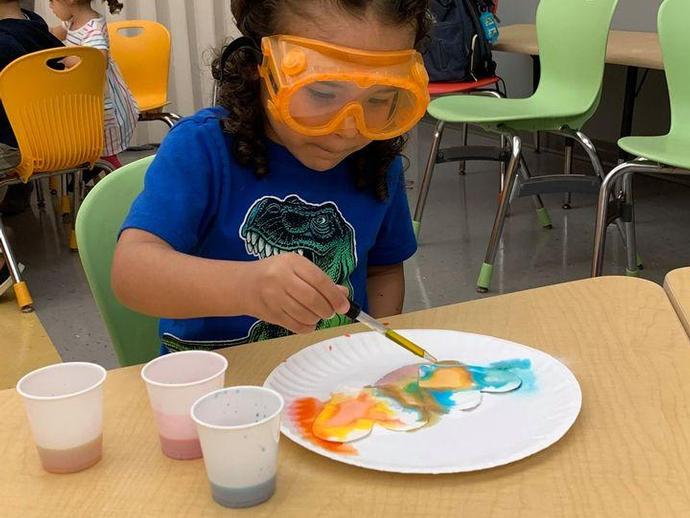
Last minute sign-ups are now being accepted for tomorrow morning's Doodle Bugs programs for ages ...
January 11, 2022
Last minute sign-ups are now being accepted for tomorrow morning's Doodle Bugs programs for ages 3-5! This month's program, which highlights winter wildlife, will take place at 10am inside the museum's education center. Register online now at https://www.vmnh.net/education/doodle-bugs! ABOUT DOODLE BUGS The museum offers children ages 3-5 the opportunity to experience science first-hand with its annual "Doodle Bugs!" program. The hour-long programs include imaginative stories, fun activities, games and crafts that spark creativity and curiosity. They are the perfect opportunity for adults and grandparents to learn and have fun with their children! Programs are held at 10 a.m. on the second Wednesday of the month from ...
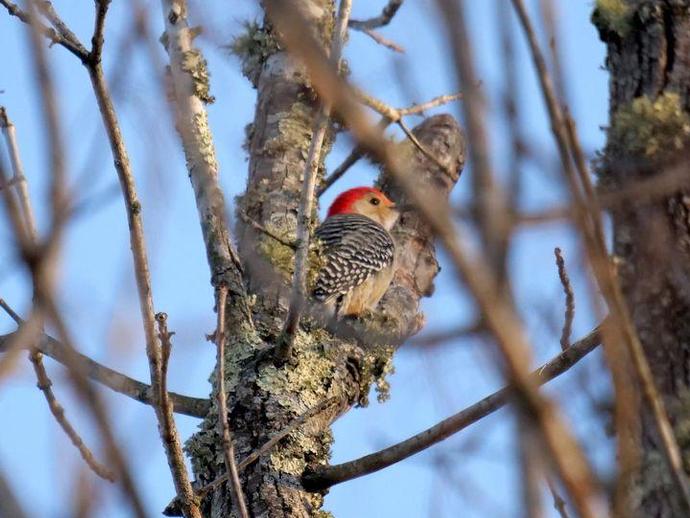
Hi, nature fans!
January 11, 2022
Hi, nature fans! It's time for another edition of #BenInNature presented by our friends at Carter Bank & Trust! The red-bellied woodpecker (Melanerpes carolinus) falls into the surprisingly broad category of "birds that are named after their least notable feature." There is a slight reddish tinge to the feathers on the belly of this species, but it's difficult to see in the field. There is a closely related species you can spot in Virginia known as the red-headed woodpecker (Melanerpes erythrocephalus). It looks pretty different, but at least it does have a prominent red head! Red-bellied woodpeckers can be found year-round throughout the eastern half of the U.S., and they're one of the more common woodpeckers you're ...
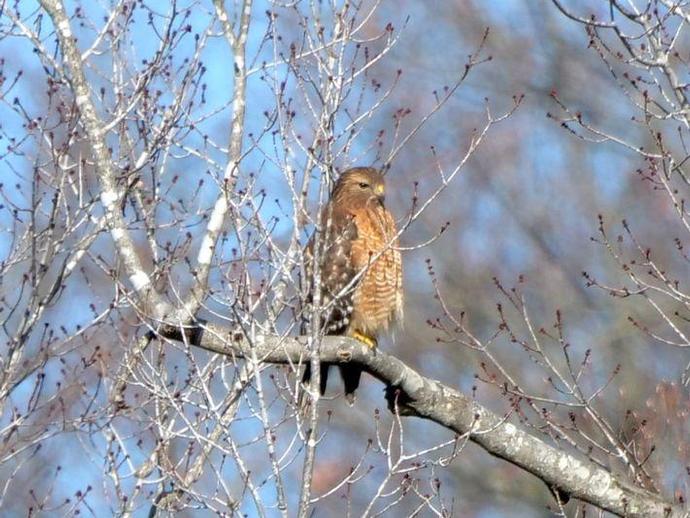
Ben here with today's edition of #BenInNature presented by our friends at Carter Bank & Trust!
January 10, 2022
Ben here with today's edition of #BenInNature presented by our friends at Carter Bank & Trust! The red-shouldered hawk (Buteo lineatus) can be spotted year-round in Virginia, and its range covers most of the eastern half of the U.S. (along with the California coast). These beautiful hawks are most often found in forests and swampland. They love hardwood stands and flooded deciduous swamps, although they can occasionally be found in suburban settings if a hardwood forest is somewhere nearby. Red-shouldered hawks tend to search for prey while perched in treetops; this one is almost certainly keeping an eye open for prey below its perch. When they sight a prey animal, they kill it by dropping directly onto it from the ...
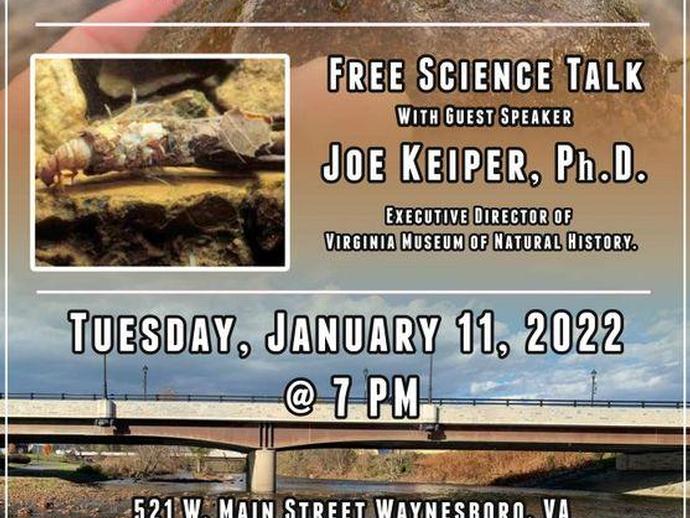
The museum's very own Dr
January 10, 2022
The museum's very own Dr. Joe Keiper will headline the next edition of the Wayne Theatre's Science Talk series, when he presents "Life Underwater: Aquatic Insects and their Feeding Habits in the South River" tomorrow (Tuesday, January 11) at 7pm at the theatre! Dr. Keiper, who serves as the museum's executive director, will offer audiences his expertise in entomology as he details the diversity of insects underwater and how they shape the river's ecological communities. The presentation is free to attend and will also be streamed live on the Virginia Museum of Natural History's Facebook page, and the Wayne Theatre's Facebook page. Location: Historic Wayne Theatre 521 W. Main Street Waynesboro, VA 22980
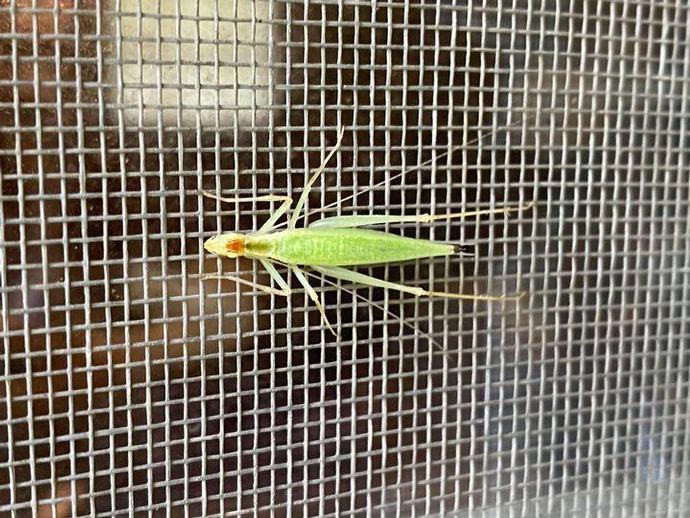
We're reaching into the archives for today's #BenInNature update presented by our friends at ...
January 9, 2022
We're reaching into the archives for today's #BenInNature update presented by our friends at Carter Bank & Trust! The following post was originally published on October 26, 2020. This is the narrow-winged tree cricket (Oecanthus niveus), and whenever I see a tree cricket, I think of the late great VMNH Curator of Entomology Dr. Richard Hoffman. If you'll indulge me in a long-winded story, I'll explain why. The summer of my fifth grade year, I volunteered in Dr. Hoffman's lab at the museum's former site on Douglas Avenue. I've always been fascinated by insects, so this was a dream come true for nerdy young Ben (as opposed to nerdy older Ben). My job was simple: Dr. Hoffman would routinely set out pitfall traps for insects, ...
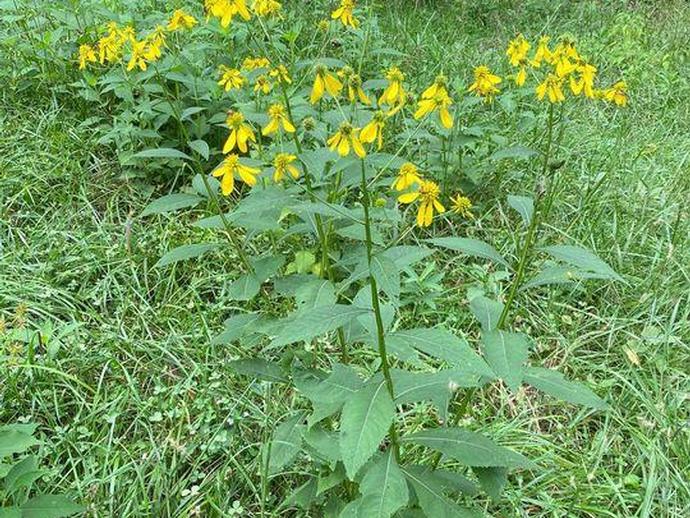
We're reaching into the archives for today's #BenInNature update presented by our friends at ...
January 8, 2022
We're reaching into the archives for today's #BenInNature update presented by our friends at Carter Bank & Trust! The following post was originally published on October 23, 2020. Yesterday, we looked at goldenrod, so today, let's look at a plant that I mistakenly thought was goldenrod until fairly recently! This is wingstem (Verbesina alternifolia), also known as yellow ironweed. Like goldenrod, it also belongs to the family Asteraceae, but the blooms look quite different. Wingstem gets its name from the ridges that run along the stem, which project out far enough that they apparently resemble wings. If you zoom in on the photo, you can see the flange-like ridges running vertically down the stem. These "wings" add a ...
Archives
2025
2024
2023
2022
2021
2020
2019
2018
2017
2016
2015
2014
2013
2012
2011
2010
2009
2008

Please Visit Us Soon
Hours:
Tuesday - Saturday: 10am - 4pm
Sunday: Noon to 4pm (Memorial Day Weekend through Labor Day Weekend only)
Monday: Closed
Admission:
$12 for ages 18-59
$6 for ages 3-17, seniors 60+, and college students
FREE for children under 3, museum members, members of ASTC Passport participating institutions, and EBT cardholders
My 4 year old son loves going to the museum. The exhibits are educational, interactive and kid-friendly.
”

 Hours & Admissions
Hours & Admissions Directions
Directions